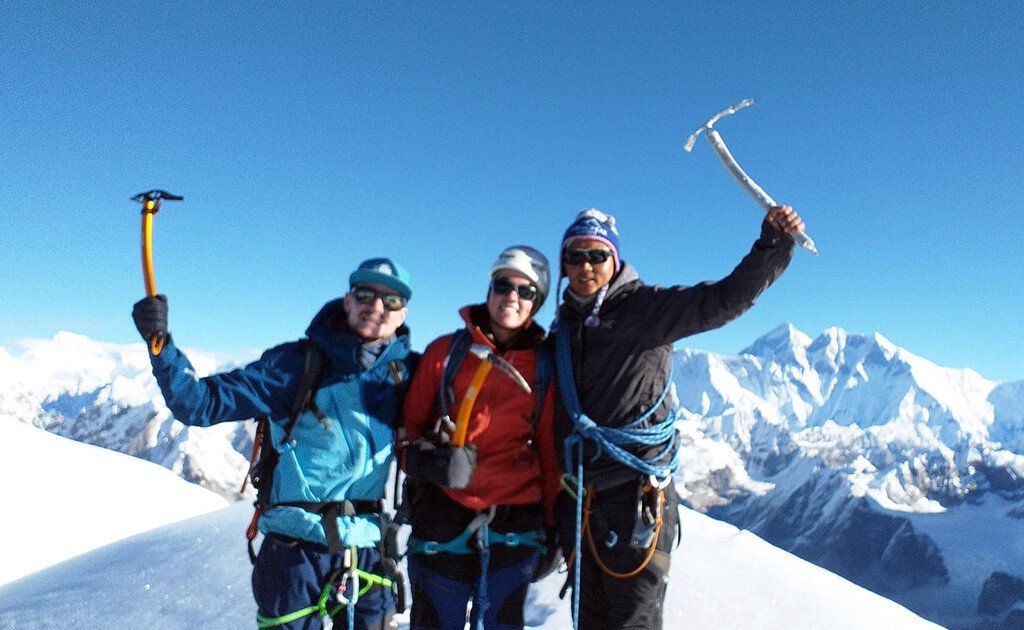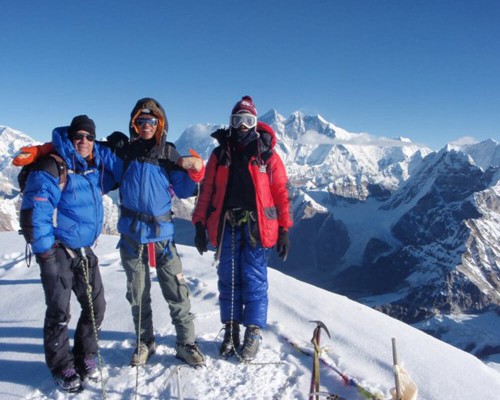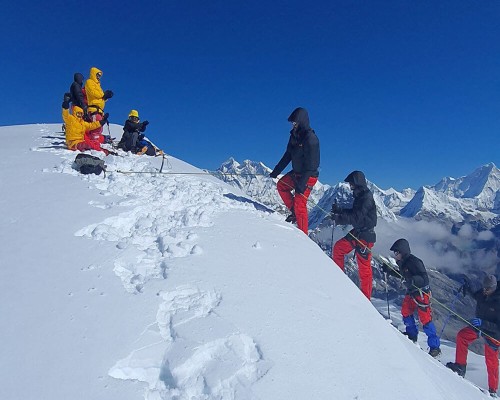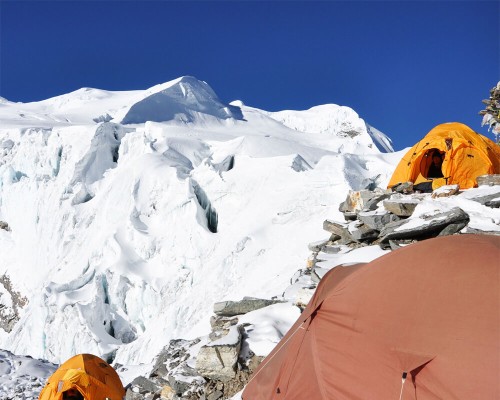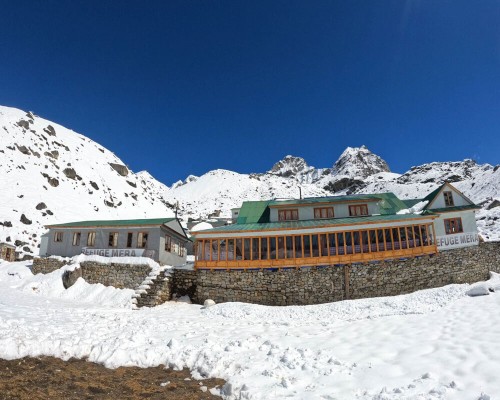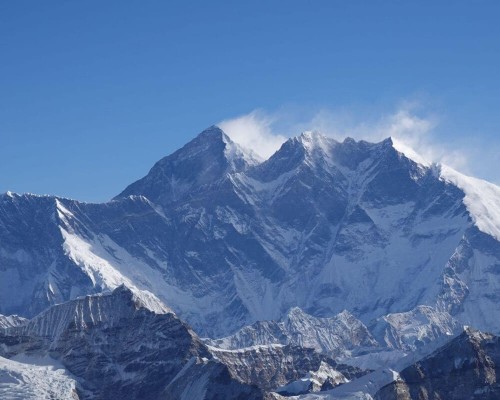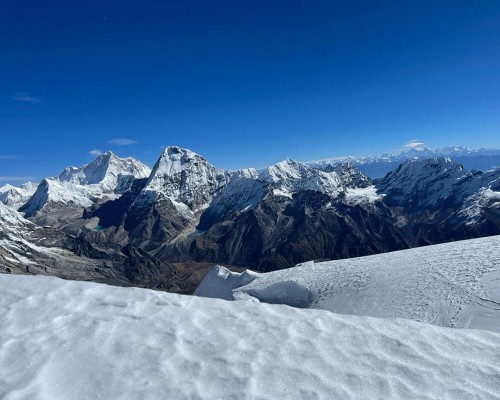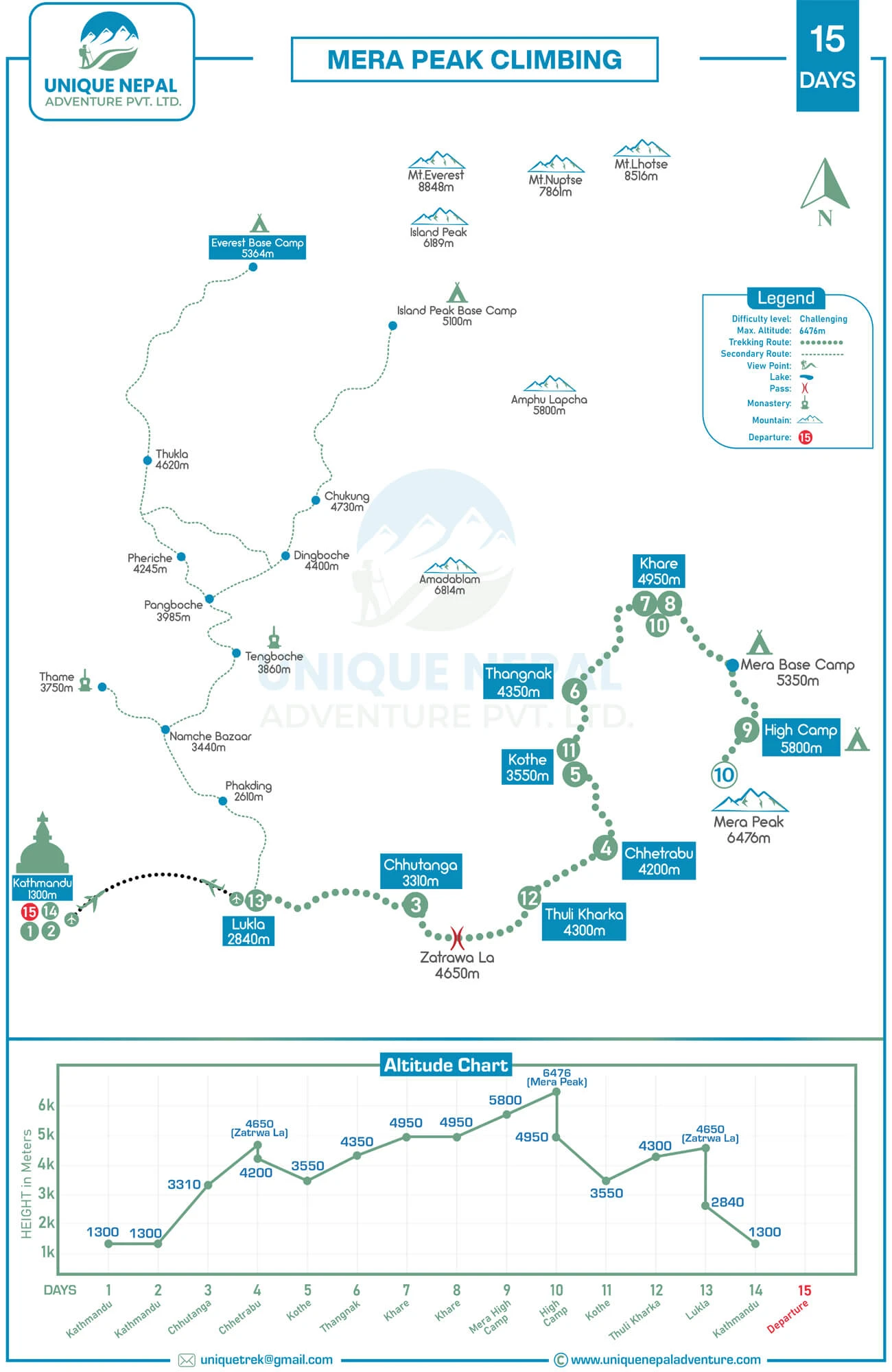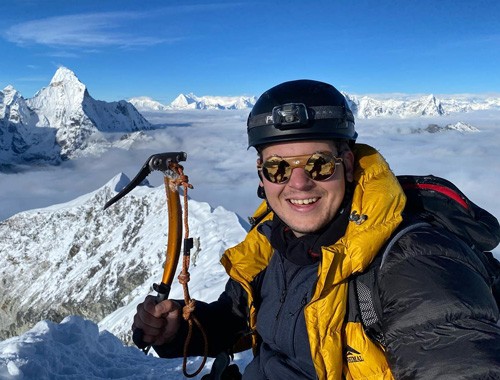Mera Peak Climbing: Thrilling View of Tallest Mountains
Mera Peak Climbing is one of the most iconic and thrilling climbing experiences. Mera Peak is situated in the Makalu Barun National Park and towers at 6,476 meters. We can say it is the highest trekking peak in Nepal.
It offers breathtaking 360-degree panoramic views of the world’s highest mountains, including Mount Everest, Lhotse, Makalu, Cho Oyu, and Kanchenjunga, all towering above 8,000 meters.
Mera Peak Climbing: A Thrilling Adventure Himalayas. Witness the majestic beauty of the mountains. “Climb the Adventure Peak Once and Take a Lifetime unforgettable Experience.”
Mera Peak climb is the perfect training peak for those preparing to summit mountains above 8,000 meters. The route provides climbers with an unforgettable adventure that combines trekking through picturesque valleys and cultural encounters with Sherpa and Rai communities.
Whether you're an experienced trekker or a beginner aspiring to summit high-altitude peaks, Mera Peak provides the ideal platform to push your limits.
The Trekking Route of Climbing Mera Peak
Mera Peak climbing begins with a scenic 35-minute flight from Kathmandu to Lukla. Which is one of the busiest airports in Nepal’s famous area of the Everest Region.
The Kathmandu to Lukla flight is wonderful, offering stunning views of the Himalayas as you approach the airport nestled on a mountaintop. Upon arrival at Lukla (2,820 meters), you'll begin the trek immediately, walking for 3 to 4 hours to your first camp, Chuthanga.
Trekking towards Makalu Baruntse National Park
Day 2, Adventure High Pass, which is good training for acclimatization, Zatrwa La Pass at 4,600 meters, and drop a few hundred meters down in Chetrabu.
And then, trekking will continue along Kothe village and Thagnak and finally reach Khare (the base camp for Mera Peak). This section of the trek offers mesmerizing views of lush forests, alpine meadows, and high mountains in the distance.
Rest and Acclimatization in Khare
Khare (5,045 meters) is an important stop for climbers, allowing for a much-needed rest day and acclimatization before ascending to high altitude. Resting and acclimatizing here is crucial to avoid altitude sickness.
We recommend hiking to Mera La, a few hundred meters ascending (5,400 meters), which is a popular excursion point during the rest day, giving you an excellent view of the surrounding glaciers and mountain ranges.
Training by Climbing Guide
Your safety, success, and satisfaction are our top priorities. Our professional climbing guide will provide essential training before the ascent. You’ll learn basic climbing techniques, including how to use equipment properly and how to move safely on icy and snowy terrain. Pay close attention to instructions and practice under supervision. This hands-on training helps ensure a smooth and successful summit without unexpected issues.
Camping at High Camp
After acclimatizing at Khare, you’ll trek to High Camp at 5,800 meters, which takes about 4 to 5 hours. You’ll arrive around lunchtime.
After a meal, we recommend a short acclimatization walk. Our team sets up a comfortable tented camp, and our cook prepares hot, energizing meals to keep you strong and warm.
Summit Day: Reaching Top of Mera Peak (6,476m)
Your final goal begins early—around 1 to 2 AM—to avoid strong afternoon winds. Our experienced climbing guide will brief you in advance on how to move, stay safe, and work as a team.
You’ll climb 676 meters, mostly on gradual snow slopes. The final 50 meters are steep and technical, where your guide will fix ropes for safety. Follow instructions carefully and enjoy the thrill of the climb.
At the summit, witness jaw-dropping views of five of the world’s tallest mountains:
You will see all 5 of the tallest Himalayas in the Everest region, like panoramic views.
- Mt. Everest (8848 m/29029 ft.)—the world's highest peak.
- Kanchenjunga (8586 m/28170 ft.)—3rd highest peak.
- Mt. Lhotse (8516 m/27940 ft.)—4th highest peak.
- Mt. Makalu (8463 m/27765 ft.)—5th highest peak.
- Mt. Cho Oyu (8201 m/26907 ft.)—6th highest peak.
You will see many white snow peaks, from under 8000 m to above 6000 m peaks. Take many photos, including with our company banner, for a lifelong memory. Your guide will help capture your moment on top of the world.
After the Summit—Descend & Celebrate
After the summit, descend easily back to High Camp for hot food and drinks. You’ll feel relief as breathing becomes easier with lower altitude.
From there, return to Khare, celebrate with your team, then trek back via the same route: Thagnak–Kothe–Zatrwa La–Lukla, and fly to Kathmandu.
Required Permits for Mera Peak Climbing
Before starting your Mera Peak climb, it is important to obtain the necessary permits, which include:
- Special Climbing Permit for Mera Peak: US$ 250
- Makalu Barun National Park Permit: NPR 3000
- TIMS (Trekking Information Management System) Card: NPR 2000
We will handle all the permit arrangements, ensuring everything is in place for your journey.
Accommodation and Meals on the Trek
Tea House Accommodation
Along the trek, you will stay in teahouses that offer comfortable, basic rooms with warm hospitality. Mera Peak Climbing is a camping trek in some sections, particularly at High Camp, but the route is mostly serviced by teahouses with clean rooms, hot meals, and friendly service. The teahouses provide a variety of organic, hygienic meals to keep you energized for the day’s trekking. The meals typically consist of local and Western options, including rice, noodles, soups, and snacks.
Camping in High Camp
At High Camp, the facilities are camping-based and include tented accommodation and meals provided by a dedicated cook. The nights at High Camp can be chilly, but the experience of waking up in the heart of the Himalayas makes it worthwhile.
Mera Peak Climbing Cost
The Mera Peak climbing cost is US$ 1975 per person, which includes everything from your arrival to departure. Which is mentioned below.
- Full-board meals during the trek.
- Accommodation in teahouses.
- Full-board camping in High Camp.
- Experienced guides and porters
- Climbing permits and national park fees.
- Flights from Kathmandu to Lukla and return
- Climbing equipment and support for summit day
- Professional climbing guide and camping team.
A minimum of two people is required for this package, but if you are a solo climber, the price comes to a bit more. And, if you book yourself, the Kathmandu Hotel cost would be only $1900 per person. Please feel free.
Best Season to Climb Mera Peak
The best time to climb Mera Peak is during the spring (March to May) and autumn (September to November) seasons. These months offer stable weather with clear skies, making it easier to enjoy the mountain views and complete your climb.
- Spring (March–May): Ideal for clearer skies, pleasant weather, and better visibility of the mountains.
- Autumn (September–November): Great for trekking and climbing, with mild weather conditions and clear views.
- Monsoon (June–August): Heavy rains can obscure views and make the terrain slippery.
- Winter (December–February): Cold temperatures and heavy snowfall can make climbing difficult.
Health and Safety Tips
Carry your personal medicine, especially if you are on any regular prescriptions. While we provide a basic first aid kit and emergency support, mountain regions lack clinics or hospitals. Our guides are trained in first aid and altitude sickness management.
Why Climb Mera Peak With Us?
We are a dedicated team at Unique Nepal Adventure, always quick to respond to our clients’ needs and questions. With professional, well-trained trekking and climbing guides, we provide safe, reliable, and high-quality service. Our team genuinely cares about every challenge you face and works hard to make your journey successful, smooth, and memorable.
- Locally Owned & Operated: We're a Nepal-based company run by local mountaineers who know the region, culture, and terrain better than anyone.
- Professional Climbing Guides: All our guides are licensed, NMA-certified, and regularly trained in altitude safety, rope techniques, and rescue protocols.
- Focused on Safety & Success: We follow a slow, well-paced itinerary for proper acclimatization—giving you the best shot at a safe and successful summit.
- No Hidden Fees: Our packages are clear and transparent, covering all major costs, including permits, meals, accommodation, and guide support.
- High Success Rate & Happy Clients: With years of experience, consistent summit success, and great reviews, we deliver an unforgettable and rewarding Himalayan experience.

